Marketing Channels
Feb 13, 2024
By Ari Manor , CEO at ZOOZ

This is one in a series of articles that provide detailed and updated information about Marketing. In this specific article, which focuses on Marketing Channels, you can read about:
- Marketing Channels
- What Marketing Channels are there?
- Public Relations (PR)
- Marketing Using Social Media
- Marketing with Google
- Marketing with Facebook
- Marketing with Pinterest
- Marketing with Instagram
- Marketing without Social Media
For additional articles about Marketing, see the Topic Menu.

Marketing Channels
Marketing channels are the pathways businesses use to communicate their products or services to consumers. These channels play a crucial role in connecting with potential customers, building brand awareness, and ultimately driving sales. Understanding the variety of channels available and how they can be effectively utilized is essential for any comprehensive marketing strategy.
 Case Study:
Case Study:
Adidas' Multi-Channel Campaign for Women
- Company: Adidas, Worldwide (2018)
- What Was Done: Adidas launched a multi-channel marketing campaign titled "She Breaks Barriers," aimed at supporting female athletes. The campaign utilized television, social media, influencer partnerships, and live events to inspire and engage women. It also featured stories of female athletes overcoming challenges, emphasizing diversity and inclusion.
- Results/Impact: The campaign significantly increased Adidas' engagement rates among women, contributing to a 15% rise in sales of women's products. The success of "She Breaks Barriers" underscored the power of using multiple marketing channels to reach and resonate with a diverse audience.
Following is an overview of key marketing channels.
Traditional Channels
- Television and Radio: Reach broad audiences through commercials and sponsorships, suitable for mass-market messaging.
- Print Media: Includes newspapers, magazines, flyers, and brochures, offering targeted advertising based on readership demographics.
- Outdoor Advertising: Billboards, banners, and transit ads provide high-visibility branding opportunities in public spaces.
- Direct Mail: Personalized letters, catalogs, and postcards sent directly to consumers' homes.
Digital Channels
- Website: The digital storefront for your business, providing information, hosting content, and facilitating e-commerce transactions.
- Social media: Platforms like Facebook, Instagram, Twitter, and LinkedIn enable engagement, community building, and targeted advertising.
- Email Marketing: Direct communication with customers through newsletters, promotional offers, and personalized messages.
- Content Marketing: Blogs, videos, podcasts, and infographics designed to attract and engage audiences by providing value.
- Search Engine Optimization (SEO) and Search Engine Marketing (SEM): Strategies to increase website visibility in search engine results, organically or through paid ads.
- Affiliate Marketing: Partnering with individuals or companies to promote your products in exchange for a commission on sales.
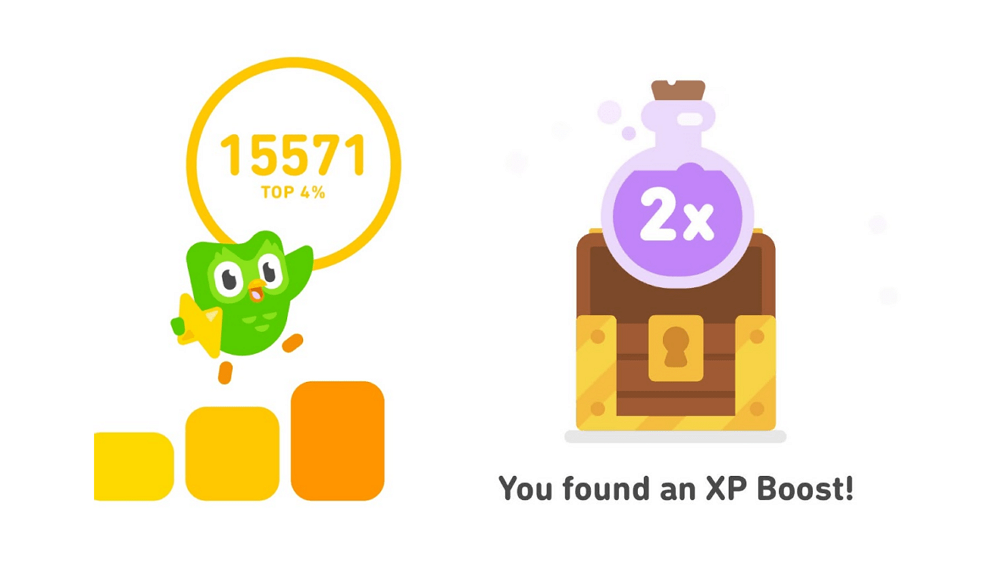 Case Study:
Case Study:
Duolingo's Engagement Using Gamification
- Company: Duolingo, USA (2020)
- What Was Done: Duolingo utilized a unique mix of marketing channels focusing on app-based gamification, social media challenges, and educational content on YouTube to engage users. Their strategy was to make learning languages fun and accessible, encouraging daily use and social sharing.
- Results/Impact: This approach contributed to a 40% increase in daily active users and a 30% growth in premium subscriptions within a year, showcasing the power of combining educational content with entertainment and social engagement as effective marketing channels.
Emerging Channels
- Influencer Marketing: Collaborating with individuals who have a significant following on social media to promote products or services.
- Podcasts: Creating or sponsoring audio content that can reach engaged listeners in a specific niche.
- Virtual and Augmented Reality: Providing immersive experiences that can showcase products or enhance brand interactions.
- Chatbots and AI: Automated customer service and engagement tools that offer personalized interactions at scale.
 Case Study: IBM's Cognitive Content Strategy
Case Study: IBM's Cognitive Content Strategy
- Company: IBM, Worldwide (2017)
- What Was Done: BM embraced inbound marketing by developing a cognitive content strategy, leveraging its Watson AI to create personalized content experiences for its users. This included tailored reports, whitepapers, and interactive tools that addressed the specific needs and interests of their target audience.
- Results/Impact: This strategy led to a 2x increase in engagement rates across IBM's content platforms and a significant increase in lead generation, demonstrating the effectiveness of personalized inbound marketing in driving meaningful engagement and business results.
Integrating Marketing Channels
The most effective marketing strategies leverage multiple channels in a coordinated way, ensuring consistent messaging and maximizing reach. Integrating traditional and digital channels allows businesses to capture a wider audience while tailoring messages to specific segments for greater impact. Analyzing performance data from each channel helps refine strategies and allocate resources to the most effective channels for achieving business goals.
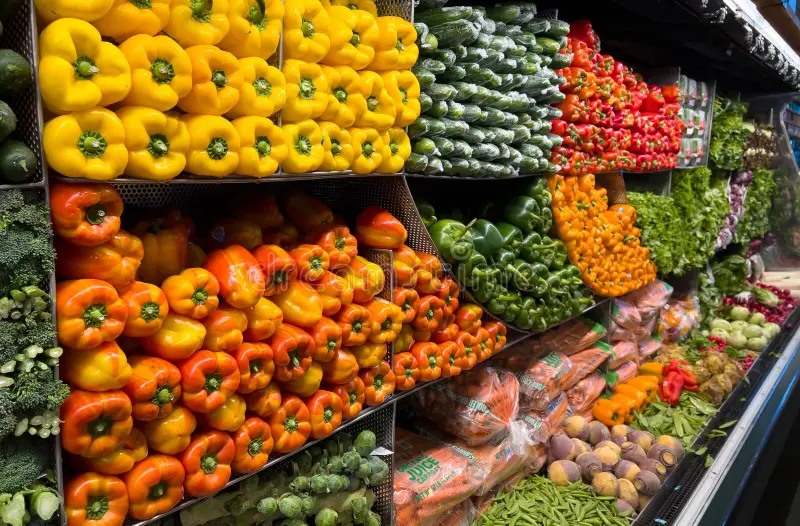 Case Study:
Case Study:
Local Organic Grocery's Community Outreach
- Company: : GreenGrocers, Asheville, NC, USA (2020)
- What Was Done: GreenGrocers, a local organic grocery store, leveraged a variety of marketing channels to engage the community and drive foot traffic. Efforts included a weekly newsletter featuring recipes and health tips, participation in local farmer's markets, and social media campaigns highlighting local suppliers and seasonal produce.
- Results/Impact: These integrated marketing efforts resulted in a 25% increase in store visits and a 40% growth in newsletter subscriptions, illustrating the effectiveness of using multiple channels to engage a local community and build a loyal customer base.
In today's fragmented media landscape, understanding and utilizing a mix of marketing channels is vital for reaching potential customers wherever they may be. Balancing traditional methods with digital innovations offers the best approach to comprehensive, effective marketing.

What Marketing Channels are there?
Marketing channels are platforms and mediums through which marketing messages are directly conveyed to the audience. Grasping the range of available channels and mastering their effective use is crucial for developing a holistic marketing strategy.
 Case Study: Local Coffee Shop's Community Focus
Case Study: Local Coffee Shop's Community Focus
- Company: Bean There, Brewed That, Asheville, NC, USA (2021)
- What Was Done: Bean There, Brewed That leveraged local community events, partnerships with other small businesses, and social media to create a cohesive marketing strategy. They hosted coffee tastings and workshops, collaborated on special promotions, and maintained an active and engaging presence on Instagram and Facebook.
- Results/Impact: The coffee shop saw a 50% increase in weekend foot traffic and a 35% rise in followers on their social media platforms over six months, demonstrating the effectiveness of community-focused marketing channels for local businesses.
Common Marketing channels include (from A to Z):
|
|
Each channel offers unique opportunities for reaching specific segments of the market, tailored to different goals, from brand awareness and engagement to direct sales and customer retention.
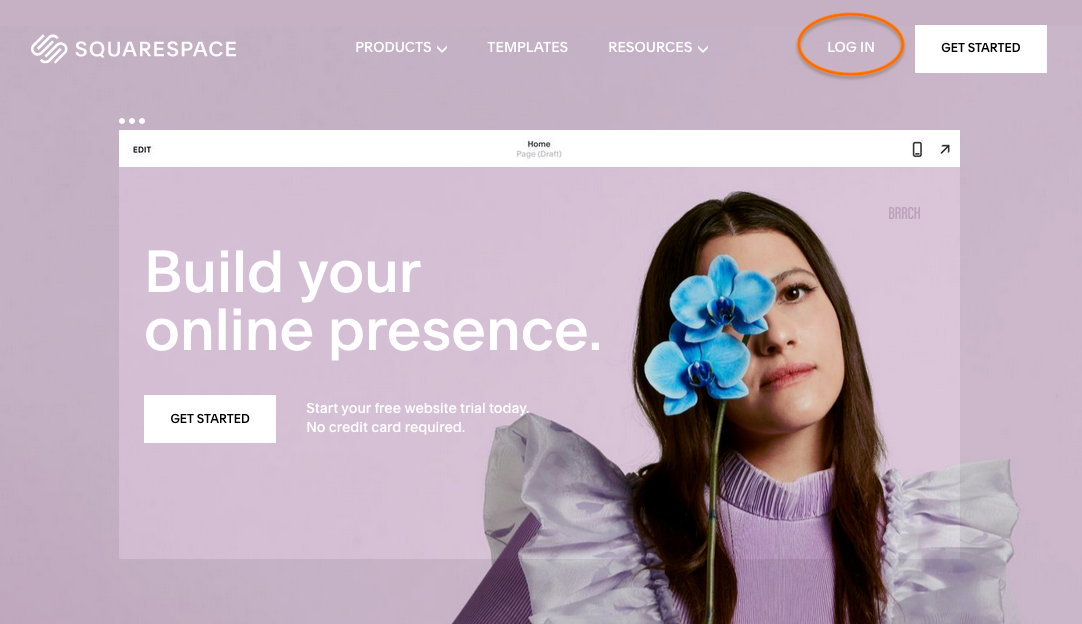 Case Study: Squarespace's Multi-Channel Marketing Campaign
Case Study: Squarespace's Multi-Channel Marketing Campaign
- Company: Squarespace, USA (2019)
- What Was Done: Squarespace executed a multi-channel marketing campaign that spanned online ads, social media, podcasts, and Super Bowl commercials. The campaign unified under the theme of empowering creativity, aiming to showcase Squarespace as the go-to platform for individuals and small businesses to create beautiful websites.
- Results/Impact: The campaign led to a 35% increase in website traffic and a 25% uptick in new user sign-ups in the first quarter following the campaign. Squarespace's ability to leverage multiple marketing channels effectively broadened its reach and enhanced brand visibility.

Public Relations (PR)
Public Relations (PR) is a strategic communication process that builds mutually beneficial relationships between organizations and their publics. It’s a discipline that looks after reputation, with the aim of earning understanding and support, and influencing opinion and behavior. PR professionals use a variety of techniques as part of their PR campaigns, from media relations and lobbying, to speaking at conferences, to online viral campaigns.
Here’s a closer look at the role of PR and its key components:
Key Functions of Public Relations
- Media Relations: Building and maintaining relationships with journalists and media outlets to secure and shape media coverage.
- Crisis Management: Preparing for and responding to any emergency or unexpected event that can affect the organization's reputation.
 Case Study: Pepsi's Crisis Management
Case Study: Pepsi's Crisis Management- Company: Pepsi
- Crisis: In April 2017, Pepsi launched a controversial ad featuring Kendall Jenner. The ad, which showed Jenner joining a protest and handing a police officer a Pepsi, was widely criticized for trivializing social justice movements. Within 48 hours, the "short film" garnered nearly 1.6 million views on YouTube, but the backlash was immediate and intense.
- Response: Initially, Pepsi defended the campaign, stating, “This is a global ad that reflects people from different walks of life coming together in a spirit of harmony, and we think that’s an important message to convey.” However, less than 24 hours later, Pepsi pulled the ad and paused the campaign. The company issued a second statement: “Pepsi was trying to project a global message of unity, peace, and understanding. Clearly, we missed the mark, and we apologize.”
- Results/Impact: Pepsi's swift response and apology were praised for their immediacy and directness. Despite the initial backlash, Pepsi managed to mitigate long-term damage to its brand. By 2022, while the incident still affected Kendall Jenner's public perception, Pepsi had successfully navigated the crisis and continued to thrive.
- Key Takeawys: Quick and effective crisis management is crucial. Pepsi's prompt apology and acknowledgment of their misstep demonstrated empathy and a commitment to action, helping to preserve the brand's reputation in the long term.
- Corporate Communication: Managing internal and external communication processes to ensure consistent messaging and brand representation.
- Reputation Management: Monitoring public opinion and implementing strategies to enhance or maintain the organization's reputation.
- Community Relations: Engaging with the local community to foster goodwill and a positive image.
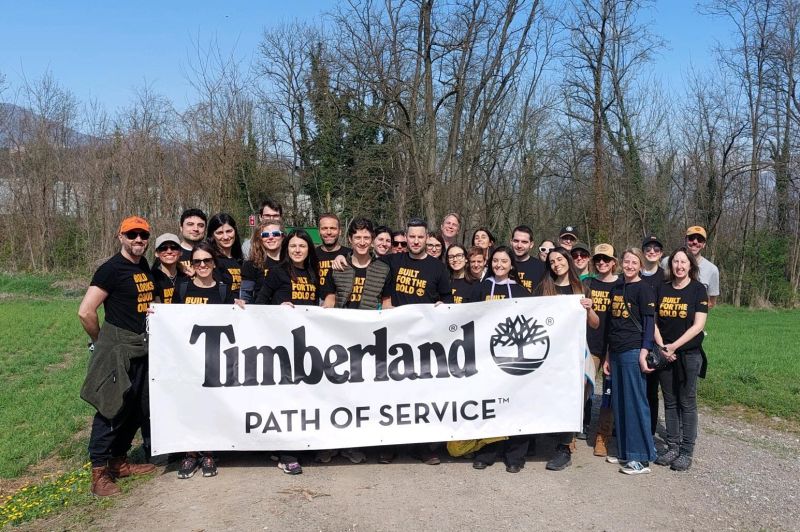 Case Study: Timberland's Community Relations Initiative
Case Study: Timberland's Community Relations Initiative- Company: Timberland, Stratham, New Hampshire, USA (Established in 1952)
- What Was Done: Timberland, under the leadership of founder Nathan Swartz and later his son Sidney Swartz, has long been committed to corporate social responsibility and community engagement. One notable initiative is the Path of Service™ program, launched in 1992. This program provides employees with paid time off to volunteer in their communities. Timberland encourages its employees to take up to 40 hours per year to engage in community service activities, which range from environmental conservation projects to social justice initiatives.
- Results/Impact: The Path of Service™ program has had a profound impact on both the community and Timberland employees. It has fostered a culture of giving and civic engagement within the company, enhancing employee morale and loyalty. The program has also led to numerous partnerships with local and global non-profits, significantly amplifying the positive impact on various communities. Timberland’s commitment to community service has strengthened its brand reputation, showcasing the company’s dedication to social responsibility.
- Key Takeaways: Timberland’s Path of Service™ program exemplifies effective community relations by integrating corporate social responsibility into the company culture. Providing employees with structured opportunities to volunteer not only benefits the community but also enhances employee satisfaction and strengthens the company’s brand image. This initiative demonstrates that consistent and genuine community engagement can lead to substantial long-term benefits for both the company and the communities it serves.
PR Strategies and Tactics
- Press Releases: Writing and distributing news-worthy stories about the organization to media outlets.
- Speech Writing: Crafting speeches for company executives for events, conferences, or media interviews.
- Event Planning: Organizing events designed to generate media coverage and public interest.
- Social Media Management: Utilizing social platforms to communicate and engage with the public and press.
- Content Creation: Producing compelling content that tells the organization’s story, such as articles, blog posts, white papers, and more.
How Can Press Releases become Viral News?
- Businesses typically publish press releases about issues that are not very fascinating, such as:
- Innovations and breakthroughs
- Significant partnerships or acquisitions
- Corporate milestones and achievements
- Awards and recognitions
- Impactful research findings
- Sustainability and CSR initiatives
- Leadership changes
- Financial performance and projections
- Industry trends and insights
- Human interest and community stories
- Innovations and breakthroughs
- However, if you want to go viral, here are better topics for press releases (and content creation):
- Controversies and Scandals: Stories that uncover or involve significant disputes, controversies, or scandals tend to capture attention.
- Celebrity Endorsements or Involvements: Involvement or endorsement by well-known personalities.
- Inspirational Stories: Uplifting and motivational tales, especially those involving overcoming adversity.
- Unusual Discoveries: Uncommon or surprising discoveries, innovations, or facts that challenge common knowledge.
- Humor and Entertainment: Content that is amusing, entertaining, or provides a novel amusement factor.
- Secrets and Insider Insights: Behind-the-scenes looks or secrets about popular products, services, or industry practices.
- Extreme Challenges: Stories of people or businesses taking on extreme challenges or achieving remarkable feats.
- Social Movements and Causes: Stories that align with or highlight important social causes or movements.
- Visual Spectacles: Content that is visually stunning or unique, encouraging shares simply for the visual appeal.
- Mysteries and Unsolved Cases: Intriguing mysteries or unsolved cases that invite speculation and discussion.
- Controversies and Scandals: Stories that uncover or involve significant disputes, controversies, or scandals tend to capture attention.
Importance of Public Relations
- Building Trust: Effective PR fosters trust with the audience by providing truthful, reliable information.
- Managing Public Perception: PR influences how people perceive the organization, which is critical for success and growth.
- Shaping Image: Through strategic communication, PR shapes and maintains the public image of the organization.
- Supporting Overall Marketing Goals: PR complements and supports marketing efforts by communicating the brand’s message and values.
 Case Study: Airbnb.org for Ukraine Campaign
Case Study: Airbnb.org for Ukraine Campaign
- Company: Airbnb, San Francisco, California, USA (Established in 2008)
- What Was Done: In response to the ongoing war in Ukraine throughout 2022, Airbnb.org launched a campaign to support refugees and those affected by the conflict. Partnering with international and regional nonprofits and governments, Airbnb.org committed to securing housing for up to 100,000 refugees. This initiative aimed to offer shelter and safety free of charge to those in need. Over 28,000 people signed up through Airbnb.org to provide temporary housing, and Airbnb founders pledged to match donations up to $10 million.
- Results/Impact: The Airbnb.org campaign has had a significant impact by providing essential housing and safety to tens of thousands of refugees. Additionally, a grassroots movement emerged on social media, where people worldwide began booking rooms in Ukraine as a means to financially support local hosts affected by the war. This user-generated initiative provided immediate assistance to those whose travel businesses had been severely impacted.
- Key Takeaway: Airbnb.org’s campaign for Ukraine highlights the power of corporate social responsibility and community action in times of crisis. By quickly mobilizing resources and partnering with nonprofits and governments, Airbnb.org effectively provided critical support to those in need. The campaign also demonstrated the impactful role of user-generated social media movements in extending support and solidarity to affected communities. This initiative showcases how brands can leverage their platforms and resources to make a meaningful difference during humanitarian crises.
Challenges in Public Relations
- Measuring Impact: Unlike marketing, PR doesn't always offer clear metrics for success, making it harder to measure ROI.
- Media Control: PR relies on third-party media, which means you don't have complete control over how your information is presented.
- Crisis Management: An organization's reputation can be damaged quickly in a crisis, and PR must respond promptly and effectively.
The Future of Public Relations
- The future of PR is digital. With the rise of social media and online platforms, PR is evolving to include digital storytelling, influencer partnerships, and data-driven strategies for reputation management. The ability to adapt to the changing media landscape, including the rise of fake news, and the increased demand for transparency and corporate social responsibility, is crucial for future PR success.
In conclusion, Public Relations is an essential aspect of any organization’s strategy for maintaining a positive public image and building relationships with its audience. It requires a blend of strategic thinking, creativity, and communication skills to manage the perception and reputation of the organization effectively.

Marketing Using Social Media
Marketing through social media involves leveraging platforms like Facebook, Instagram, Twitter, LinkedIn, and TikTok to connect with audiences, enhance brand visibility, and drive business goals. This dynamic approach integrates various strategies to engage users, foster community, and promote products or services effectively.
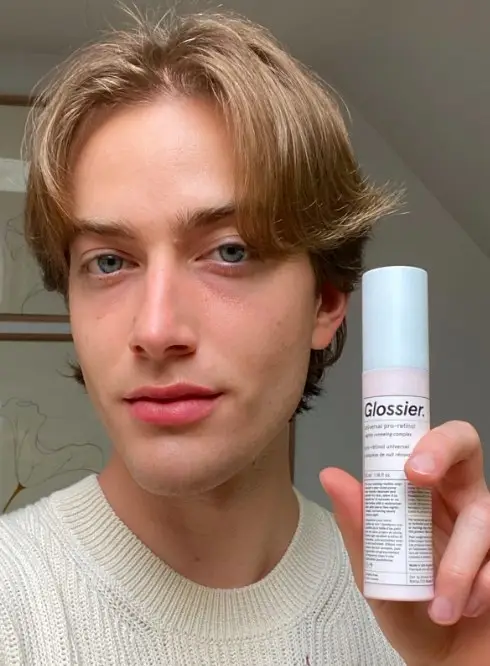 Case Study: Glossier's Social Media-Driven Growth
Case Study: Glossier's Social Media-Driven Growth
- Company: Glossier, USA (2018)
- What Was Done: Glossier's marketing strategy centered around leveraging social media platforms to build a community and engage directly with customers. They utilized user-generated content, influencer partnerships, and interactive social media campaigns to promote their beauty products.
- Results/Impact: This strategy led to Glossier achieving a 40% year-over-year growth rate, with social media driving 80% of traffic to their website. The brand successfully created a loyal customer base and a strong online community, underlining the effectiveness of social media as a primary marketing channel in the beauty industry.
Key Elements for Successful Social Media Marketing
- Content Strategy: Craft a focused strategy to guide themes, messaging, and content formats, aligning with brand objectives and engaging the target audience effectively.
- Content Creation: Develop engaging, valuable content tailored to each platform's audience, including posts, stories, videos, and live sessions.
- Community Engagement: Actively interact with followers through comments, messages, and community groups to build relationships and loyalty.
 Case Study: A Craft Brewery's Instagram Success
Case Study: A Craft Brewery's Instagram Success- Company: Hoppy Hops Brewery, Portland, OR, (2019)
- What Was Done: Hoppy Hops Brewery used Instagram to showcase their craft beer selection, behind-the-scenes brewing processes, and local events. They engaged with followers through regular posts, stories, and interactions, focusing on building a strong brand identity and community.
- Results/Impact: The brewery's focused use of Instagram contributed to a 60% increase in followers and a 30% rise in taproom visits over the year, proving that even small businesses can significantly benefit from a well-executed social media strategy.
- Paid Advertising: Utilize platform-specific advertising tools to target and reach specific demographics with precision.
- Influencer Partnerships: Collaborate with influencers to tap into their audiences and gain credibility through association.
- Analytics and Monitoring: Use social media analytics to track performance, understand audience behavior, and refine strategies for better results.
- Consistency and Branding: Maintain a consistent posting schedule and coherent brand messaging across all platforms to strengthen brand recognition.
By integrating these strategies, businesses can harness the power of social media to significantly enhance their marketing efforts, reaching diverse audiences where they spend a significant amount of their online time.
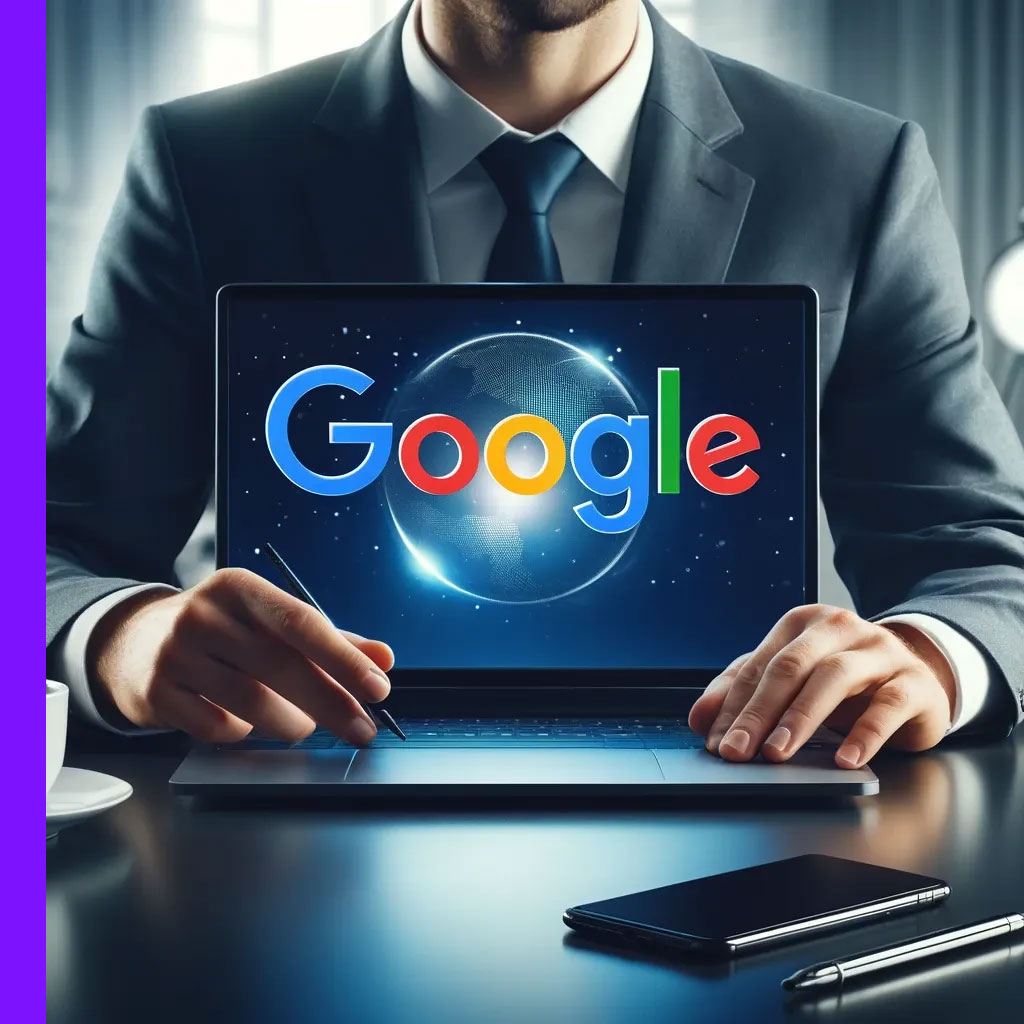
Marketing with Google
Marketing with Google offers a robust suite of tools and platforms that can significantly enhance your online visibility and attract targeted traffic to your website. Here are key strategies for leveraging Google in your marketing efforts:
- Google Ads: Utilize pay-per-click (PPC) advertising to appear in Google's search results for relevant keywords, effectively reaching potential customers actively searching for your products or services.
- Search Engine Optimization (SEO): Optimize your website's content and structure to rank higher in organic search results, improving visibility and traffic without the cost of ads.
- Note: Integrating organic search results, enhanced by SEO, with Google Ads campaigns has been shown to boost clicks on standard (organic) search links in Google.
- Note: Integrating organic search results, enhanced by SEO, with Google Ads campaigns has been shown to boost clicks on standard (organic) search links in Google.
- Google My Business: Claim and optimize your Google My Business listing to improve local search visibility, share important business information, and gather customer reviews.
 Case Study: Local Artisan Jewelry Store's Google My Business Optimization
Case Study: Local Artisan Jewelry Store's Google My Business Optimization- Company: Gemstone Gallery, Santa Fe, NM, USA (2020)
- What Was Done: Gemstone Gallery optimized their Google My Business listing with updated information, photos of their pieces, and customer reviews. They also utilized Google Ads to target local customers searching for artisan jewelry.
- Results/Impact: These efforts resulted in a 70% increase in store visits from Google searches and a 40% uptick in sales attributed to online inquiries. This success underscores the value of Google My Business and targeted ads for local businesses looking to increase visibility and attract customers.
- Google Analytics: Implement Google Analytics to track website traffic, user behavior, and campaign performance, gaining insights to inform data-driven marketing decisions.
- Google Search Console: Use Google Search Console to monitor and maintain your site's presence in Google Search results, identifying issues and opportunities for optimization.
- YouTube Marketing: As a Google-owned platform, YouTube offers vast potential for video marketing, allowing businesses to reach a wide audience with engaging video content.
 Case Study: SEMrush's SEO and SEM Strategy
Case Study: SEMrush's SEO and SEM Strategy
- Company: SEMrush, Worldwide (2021)
- What Was Done: SEMrush leveraged Google's suite of marketing tools, including SEO and SEM strategies, to drive traffic to its website. They utilized Google Ads for targeted advertising and Google Analytics to refine their marketing approach based on user data. Content marketing enhanced by keyword research tools from their own platform also played a crucial role.
- Results/Impact: This integrated Google marketing strategy led to a 50% increase in web traffic and a 35% growth in subscription sign-ups within a year, showcasing the effectiveness of combining SEO and SEM strategies for B2B marketing.
By strategically combining these Google tools, businesses can enhance their online marketing efforts, driving more qualified traffic, increasing conversions, and ultimately growing their online presence and sales.

Marketing with Facebook
Marketing with Facebook offers businesses a powerful platform to reach and engage with their target audience effectively. Utilizing Facebook's extensive user base and sophisticated targeting options, businesses can create tailored marketing strategies to increase brand visibility, drive web traffic, and boost sales.
Key Strategies for Successful Facebook Marketing
- Facebook Pages: Create and maintain a Facebook Page for your business to share updates, post content, and communicate with your audience.
- Facebook Ads: Use Facebook's advertising platform to run targeted ads. You can customize your audience based on demographics, interests, behaviors, and more.
 Case Study: Blue Apron’s Facebook Ad Campaigns
Case Study: Blue Apron’s Facebook Ad Campaigns- Company: Blue Apron, USA (2019)
- What Was Done: Blue Apron utilized Facebook's targeted ad capabilities to reach potential customers based on their interests in cooking, food, and wellness. The campaigns featured engaging visuals, customer testimonials, and special offers to attract new subscribers to their meal kit service.
- Results/Impact: The Facebook ad campaigns led to a 25% increase in new customer acquisitions and a significant improvement in cost per acquisition (CPA), demonstrating the power of targeted social media advertising in driving growth for subscription-based services.
- Content Strategy: Develop a consistent content strategy that includes engaging posts, videos, live broadcasts, and events to keep your audience interested and engaged.
- Engagement: Actively engage with your followers by responding to comments, messages, and reviews to build a community around your brand.
 Case Study: Boutique Plant Shop's Community Engagement
Case Study: Boutique Plant Shop's Community Engagement- Company: Green Thumb Haven, Boulder, CO, USA (2021)
- What Was Done: Green Thumb Haven used Facebook to create a vibrant community around plant care and gardening. They hosted live Q&A sessions, shared care tips, and ran contests to engage their audience. Facebook Ads targeted to local plant enthusiasts helped increase their reach.
- Results/Impact: These strategies boosted the shop's Facebook following by 50% and increased in-store visits by 30%, highlighting the effectiveness of engaging content and community building on social media platforms for small businesses.
- Facebook Insights: Utilize Facebook Insights to analyze the performance of your page and posts, understanding what works best for your audience to refine your strategy.
- Facebook Groups: Consider creating or participating in Facebook Groups related to your industry to increase visibility and establish your brand as an authority.
- Facebook Marketplace: For businesses selling products, Facebook Marketplace can be a valuable tool to reach local buyers.
- Facebook Events: Use Facebook Events to promote and manage registrations for online or physical events, helping to increase attendance and engagement.
By leveraging these strategies, businesses can effectively use Facebook to reach a wide audience, engage with customers, and achieve their marketing objectives.

Marketing with Pinterest
Marketing with Pinterest is a visually driven strategy that leverages the platform's unique user base interested in discovering new ideas, products, and inspiration. Pinterest serves as a powerful tool for increasing brand awareness, driving traffic to websites, and boosting sales, especially for businesses in creative, lifestyle, or retail sectors. Here's how to effectively use Pinterest for marketing:
- Create Inspiring Boards: Develop themed boards that reflect your brand’s identity and appeal to your target audience's interests and aspirations.
 Case Study: The Spice Suite's Community-Driven Growth
Case Study: The Spice Suite's Community-Driven Growth- Company: The Spice Suite, Washington D.C., USA (2019)
- What Was Done: The Spice Suite, a small boutique spice shop, used Pinterest to reach a wider audience interested in culinary arts. The shop created boards featuring recipes, spice blends, and cooking tips, integrating their products into visually appealing pins. They also encouraged their customers to share photos of dishes made with their spices, creating a vibrant and engaging community around their brand.
- Results/Impact: The Spice Suite’s Pinterest strategy led to a 60% increase in website traffic and a 50% growth in online sales within six months. Their success on Pinterest underscored the platform’s potential for small businesses to build a dedicated community and drive sales through engaging, content-driven marketing.
- Pin High-Quality Images: Use visually compelling, high-quality images for your pins to stand out and attract users' attention.
- Optimize for SEO: Incorporate keywords in your pin descriptions, board titles, and profiles to improve visibility on Pinterest search results.
- Use Rich Pins: Implement Rich Pins to provide more context about an idea because they include extra information directly on the pin itself, which can be details about a recipe, a product, an article, and more.
 Case Study: West Elm's Visual Marketing Strategy
Case Study: West Elm's Visual Marketing Strategy- Company: West Elm, USA (2018)
- What Was Done: West Elm embraced Pinterest as a key platform for its visual marketing strategy, creating boards that showcased its modern furniture and home decor collections. They utilized Pinterest's rich pins feature to provide pricing and product information directly within pins, encouraging direct engagement and facilitating the path to purchase. Additionally, West Elm leveraged user-generated content by encouraging customers to share their own home setups featuring its products.
- Results/Impact: This strategic use of Pinterest significantly increased West Elm's online visibility and customer engagement, leading to a 45% increase in traffic from Pinterest to the West Elm website and a 35% uplift in online sales attributed to the platform. The brand effectively capitalized on Pinterest’s visual and aspirational nature to drive both brand awareness and direct sales.
- Promote User Engagement: Encourage users to save your pins to their boards, comment on your pins, and click through to your website.
- Leverage Pinterest Ads: Utilize Pinterest's paid advertising options to reach a larger or more targeted audience, enhancing visibility and driving specific actions.
- Analyze and Adjust: Monitor Pinterest analytics to understand which pins and boards are performing best and adjust your strategy accordingly.
- Engage with the Community: Repin content from other users, comment on popular pins, and collaborate with influencers or brands to expand your reach.
Pinterest's visual search engine qualities make it an exceptional platform for businesses looking to inspire their audience and drive meaningful engagement. By crafting a thoughtful Pinterest strategy, brands can effectively showcase their products and ideas to an engaged, purchase-ready audience.

Marketing with Instagram
Marketing with Instagram leverages the platform's visual nature and high engagement rates to connect with audiences, enhance brand visibility, and drive business outcomes. Instagram's suite of features, from posts and stories to IGTV and Reels, offers diverse opportunities for creative storytelling and audience interaction.
How to Effectively Deploy Instagram for Marketing
- Optimize Your Profile: Ensure your bio clearly describes your business, includes a clickable link to your website or a landing page, and represents your brand identity.
- High-Quality Visual Content: Post visually appealing photos and videos that align with your brand aesthetic and resonate with your target audience.
- Stories and Highlights: Use Stories to share behind-the-scenes content, promotions, and user-generated content. Save important stories as Highlights for longer visibility.
- Engage with Your Audience: Actively respond to comments and messages, and engage with your followers' content to build community and loyalty.
 Illustrational Case Study:
Illustrational Case Study:
Local Art Gallery's Virtual Exhibitions- Company: Art Haven, Portland, OR, USA (2020)
- What Was Done: In response to the COVID-19 pandemic, Art Haven utilized Instagram to host virtual art exhibitions. They created immersive content that featured artist interviews, behind-the-scenes looks at the creative process, and interactive Instagram Stories where followers could vote for their favorite pieces.
- Results/Impact: This innovative approach allowed Haven Gallery to maintain engagement during lockdowns, resulting in a 30% increase in followers and a 20% rise in art sales made directly through Instagram inquiries. The gallery's use of Instagram for virtual exhibitions demonstrated the platform's effectiveness in creating engaging, immersive experiences that can drive both engagement and sales, even in challenging times.
- Use Hashtags Strategically: Incorporate relevant hashtags to increase the discoverability of your content to wider audiences.
- Instagram Ads: Utilize Instagram’s advertising platform to create targeted ads that appear in users' feeds and stories, reaching potential customers based on specific demographics, interests, and behaviors.
- Influencer Collaborations: Partner with influencers who resonate with your brand to reach new audiences and lend credibility to your products or services.
 Case Study: Gymshark's Influencer Collaborations
Case Study: Gymshark's Influencer Collaborations- Company: Gymshark, UK, (2017)
- What Was Done: Gymshark leveraged Instagram by partnering with fitness influencers and athletes who embodied the brand’s values. These collaborations involved sponsored content, product placements, and participation in Gymshark’s fitness challenges and events. The brand focused on creating high-quality, aspirational content that resonated with its target audience, emphasizing community and lifestyle beyond just the products.
- Results/Impact: Gymshark’s Instagram strategy played a pivotal role in the brand's explosive growth, increasing its follower count by over 2 million within a year and contributing significantly to a 200% year-on-year growth in revenue. The brand’s emphasis on community and lifestyle helped cultivate a loyal customer base and solidified Gymshark’s position as a leading fitness apparel company.
- Analytics and Insights: Use Instagram's analytics tools to track engagement, follower growth, and the performance of your posts and stories, refining your strategy based on data insights.
- Regular Posting Schedule: Maintain a consistent posting schedule to keep your audience engaged and ensure your brand stays top of mind.
- Leverage Reels and IGTV: Create engaging short-form videos with Reels and longer video content with IGTV to tap into Instagram's vast audience looking for dynamic visual content.
By integrating these strategies, businesses can harness Instagram's potential to create meaningful connections with their audience, showcase their brand creatively, and achieve marketing objectives in a visually driven and highly interactive environment.

Marketing without Social Media
Marketing without relying on social media requires leveraging a mix of traditional and digital channels to reach and engage your target audience effectively. This approach can be particularly beneficial for reaching audiences less active on social media or for diversifying marketing strategies.
Key Strategies for Marketing without the Use of Social Media
- Content Marketing: Develop valuable content like blogs, articles, whitepapers, and eBooks to attract and engage your audience, boosting your website's SEO in the process.
 Case Study: Trader Joe's Fearless Flyer
Case Study: Trader Joe's Fearless Flyer- Company: Trader Joe's, USA (ongoing)
- What Was Done: Trader Joe's employs a unique marketing approach by relying heavily on its newsletter, the "Fearless Flyer," instead of traditional social media platforms. This printed and online newsletter features a mix of product highlights, recipes, and quirky descriptions that embody the brand's fun and eclectic image. It's used to drive traffic to stores by highlighting new products and seasonal favorites.
- Results/Impact: The "Fearless Flyer" has become a cult favorite among customers, contributing significantly to Trader Joe's word-of-mouth reputation and in-store traffic. While exact figures are closely held by the privately-owned company, industry analysts estimate that the Flyer has played a crucial role in Trader Joe's achieving above-average sales per square foot compared to industry standards.
- Email Marketing: Use email campaigns to communicate directly with your audience, providing updates, promotions, and personalized content to foster loyalty and drive conversions.
- SEO (Search Engine Optimization): Optimize your website and content for search engines to increase visibility and attract organic traffic from your target audience searching online.
- PPC (Pay-Per-Click) Advertising: Invest in PPC campaigns on search engines like Google or Bing to drive targeted traffic to your website quickly.
- Affiliate Marketing: Partner with affiliates who can promote your products or services to their audiences, extending your reach beyond your immediate network.
- Networking and Events: Create or participate in industry events, conferences, and networking groups to build relationships, enhance your brand's visibility, and directly engage with potential customers.
- Public Relations: Utilize press releases, media outreach, and content placements in relevant publications to build brand awareness and credibility.
- Direct Mail: Send personalized letters, postcards, and catalogs to reach your audience in a tangible way, particularly effective for local businesses or specific demographic groups.
 Illustrational Case Study:
Illustrational Case Study:
Local Coffee Roaster's Subscription Service- Company: Beans & Dreams, Asheville, NC, USA (2021)
- What Was Done: Beans & Dreams, a small coffee roastery, launched a subscription service marketed through direct mail, local event sponsorships, and collaborations with nearby businesses. The service offers monthly deliveries of freshly roasted coffee to subscribers, along with information about the beans’ origins and brewing tips.
- Results/Impact: This approach allowed Beans & Dreams to grow its subscription base by 40% within a year, enhancing customer loyalty and providing a steady revenue stream. The success of the marketing strategy, devoid of social media, underscored the effectiveness of direct and community-focused marketing efforts for small businesses.
- Referral Programs: Encourage existing customers to refer new customers through incentives, leveraging word-of-mouth to gain trust and expand your customer base.
- Influencer Collaborations: Collaborate with influencers outside of social media, such as well-known bloggers, industry experts, or local celebrities, to promote your brand to their followers.
- Customer Loyalty Programs: Create loyalty programs that reward repeat customers, encourage continued business and word-of-mouth recommendations.
- Webinars and Online Workshops: Host educational webinars or workshops to demonstrate your expertise, engage with your audience, and generate leads.
By incorporating these strategies, businesses can create a robust marketing plan that doesn't rely on social media, targeting their audience through a variety of channels to build brand awareness, engage with potential customers, and drive sales.
Marketing Strategy and Consulting
Interested in getting help with your marketing efforts and marketing strategy?
Contact us: info@zooz.co.il ,+972-9-958-5085
Marketing Articles
- Marketing Overview
- Marketing Goals
- Marketing Metrics
- Marketing Types
- Marketing Channels
- Demographic Marketing
- Marketing Business Models
- Industry-Specific Marketing
- Professional Services Marketing
- Marketing Strategy
- Market Research
- Marketing Communications (MarCom)
- Marketing Execution
- Makreting Careers
- Marketing Education
- Marketing Glossary (200 terms)
- Marketing Versus Other Disciplines
- Marketing Agencies and Outsourcing





